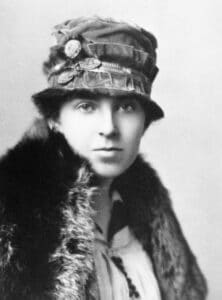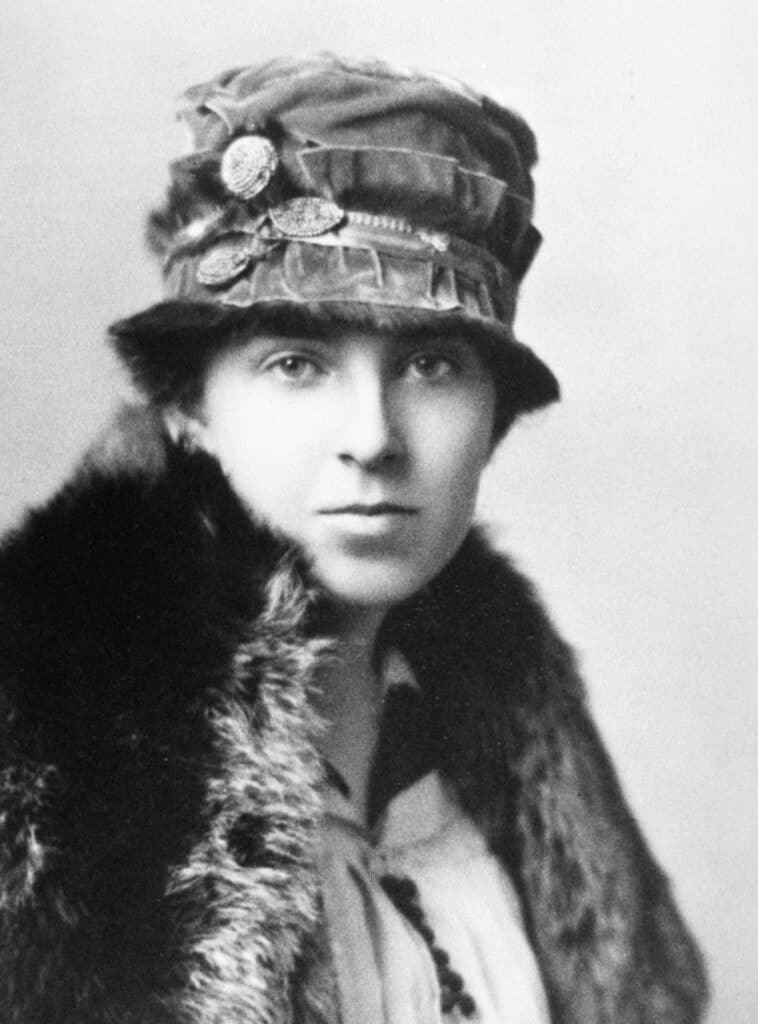“I will take anything I don’t have to feed.”
– Margaret Woodbury Strong

Every year since 1998, The Strong National Museum of Play in Rochester, NY inducts beloved toys from our past into its Toy Hall of Fame. Like other Hall of Fame museums, making the list is the pinnacle of success for our childhood favorites. In 2023, that included Baseball Cards, Cabbage Patch Kids, Nerf Toys, and the Fisher-Price Corn Popper.
The Strong Museum of Play is the vision and legacy of Margaret Woodbury Strong (1897-1969). Born on March 20, 1897, Margaret grew up in Rochester, NY, an only child in a wealthy family of collectors. Her father, John Charles Woodbury (1859–1937), who was in the buggy business, collected coins and recorded life events in scrapbooks. Her mother, Alice Motley Woodbury (1859–1933), collected 19th-century Japanese objects d’art. And an admired aunt collected bookplates. When John C. Woodbury, Margaret’s father, died in October 1937, he left her $1.5 million, and she inherited the collections both parents had acquired over their lifetimes – coins, medals, and stamps from her father, and bookplates, Japanese artwork, and inkwells from her mother. She meticulously maintained their collections long after they were gone.
As early investors in the Eastman Kodak Company, the Woodbury’s fortunes grew alongside George Eastman’s, and their wealth afforded Margaret many unique opportunities to indulge her passions, including building a collection of dolls from her travels around the world.
Thanks to her parents’ passion for traveling, Margaret saw more of the world by age 11 than most people do in a lifetime. As an adult reflecting on her travels, she noted, “I was allowed to carry a small bag to put my dolls and toys in and to add anything I acquired on the trips. Consequently, my fondness for small objects grew.” The Woodburys also spent considerable time visiting museums and attending the theater. In short, they made Margaret’s world into both a classroom and a playground.
Surrounded by grown-ups and objects—but rarely children her own age—Margaret turned to her dolls and miniatures to keep her company. She also engaged in competitive solo sports, excelling at golf (Margaret trained under golf professional Walter Hagen, won multiple titles, and set women’s records at Oak Hill and other local country clubs), archery, and horseback riding.Margaret’s collecting interests waned during her 38-year marriage to Homer Strong, with the couple turning to their mutual interests in gardening, flower arranging, and raising their only child, Barbara.

In 1953, Margaret fell down the stairs at her Maine cottage, breaking multiple bones, including several vertebrae. It was during her recovery that she “started in collecting dollhouses in a big way,” according to her 1960 draft, “My Doll Houses.” “Because I could not bend I had tables built to hold the doll houses and I could easily furnish them standing up.”
With Homer’s death in 1958, Margaret launched herself wholly into the pursuit of adding to her existing collections and by 1969 had amassed more than 27,000 dolls (up from 600 in 1960), 500 dollhouses, and a seemingly endless number of middle-class American household objects spread over more than 50 categories. The vast majority of her collections, however, related in some way to play, and she earned a particular reputation for her outstanding collection of dolls and toys.
Margaret started sharing her doll and dollhouse collections in the late 1950s. In December 1957, the Rochester Times-Union noted, “These are only a few of the highlights of this stupendous collection which will soon be open to the children of Rochester and the general public.” A year later, the Rochester Historical Society sponsored the first public showing of the dollhouses, with 100 on view. Two months later, Hobbies—The Magazine for Collectors, publicized the event nationally.
As her collections grew, Margaret began to think of them as a museum. To house her acquisitions, she added two gallery-like wings to her 30-room suburban Rochester residence. When people came to visit, she asked them to sign a guest book and record their impressions.

In 1968 Margaret obtained a provisional charter from the New York State Board of Regents for the “Margaret Woodbury Strong Museum of Fascination,” a name she took from the way guests often described her collections. She planned to add another wing and a lecture hall to her home, but she never built them. On July 17, 1969, she died in her sleep at age 72.
In her will, Margaret left her collections and most of her financial resources for the creation of a museum; however, organizing, indexing, and presenting the collections to the public was not an easy job given the size and scope of what she had amassed. It was estimated that Margaret left behind several hundred different types of collections that collectively included several hundreds of thousands of individual items. According to published reports, “virtually every nook and cranny of her home was filled. Even bathrooms, bathtubs, and the walls of every room, and her living room looked like a used furniture store.” Thirteen years later, in 1982, the Margaret Woodbury Strong Museum, known as The Strong, opened to the public.
Today, The Strong welcomes more than 500,000 visitors a year to its downtown Rochester facility to experience the dynamic, interactive exhibits of the world’s only collections-based museum devoted solely to the history and exploration of play. The Strong complex also houses the National Toy Hall of Fame, the World Video Game Hall of Fame, the Brian Sutton-Smith Library and Archives of Play, the Woodbury School, and the American Journal of Play.
For more information, see also New York Heritage Digital Collections, which features The Strong’s Margaret Woodbury Strong Papers, 1897–1969 and nearly 70 images that document Margaret’s life and legacy.
The Strong National Museum of Play is located at One Manhattan Square, Rochester, New York. For hours, directions, and more information on this museum and its exhibitions, visit www.museumofplay.org.





Related posts: